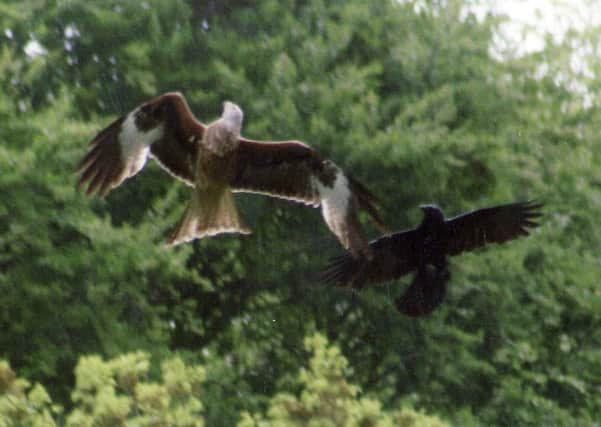Agitated calls on weekly visitto the ‘church’


She was walking up the track to Kingley Vale with her husband on their weekly visit to what they call their church, the woodland grottoes of Kingley Vale where the branches of ancient yew trees make a protection like a cathedral fan-vaulting over one’s head.
This lady will see everything going on around her in the fields, woods, hedgerows and fencelines as she walks. Often she reports, in autumn, spotted flycatchers feeding up on insects as these migrants build fat for the journey into Africa.
Advertisement
Hide AdAdvertisement
Hide AdShe will see a deer’s slot and tell the difference between fallow, roe and muntjac and whether they have young. This walk gave here the dust-up between crop and red kite. The kite is very much on the defensive and the crow on the attack.
Crows get very angry with buzzards too and the mini eagle always flees out of the way while giving plaintive mews of distress.
The kite, one of several breeding now in the Chichester area may have nested in this wood in spring so perhaps regarded the wood as home ground but crows are more pugnacious. At the moment in dead of winter they hang about the main road feeding on road kills. They may also be about the fields looking for a dead rabbit or he numbles of a shot deer, that has been gralloched.
Kites always seem to be hungry. Shakespeare said you would an “empty (stuffed) eagle to guard the chickens from a hungry kite” in Henry VI Part II Act III.
Advertisement
Hide AdAdvertisement
Hide AdThe Bard made several more references to kites especially in The Taming of the Shrew where he likened disobedient wives to kites, “which bate and beat, and will not be obedient”.
“When the kite flies, look to lesser linen” warned Shakespeare. This was a reference to the bird’s habit of collecting litter to make its nest including snatching clothes from washing lines. My father once wrote a story titled The Flight of the Pale Pink Pyjamas which was an event that happened in Wales in the 1920s when a kite flew off with these garments from a country house in the mountains. Charles Tunnicliffe made a nice drawing of the moment for the book.
It is known that kites will rob crows’ nests of young chicks if it ever gets the chance, so perhaps the Kingley Vale crow had been a victim back in the spring and was giving the raptor a piece of its mind.
Kites are English vultures if you like, and will eat anything from earth worms turned up by the plough to a dead fox or badger on the side of the road. In medieval times they were given Royal protection for the amount of good they did in the filthy city streets.
Today they probably enjoy the waste food thrown out of cars such as take-aways and picnic remains.